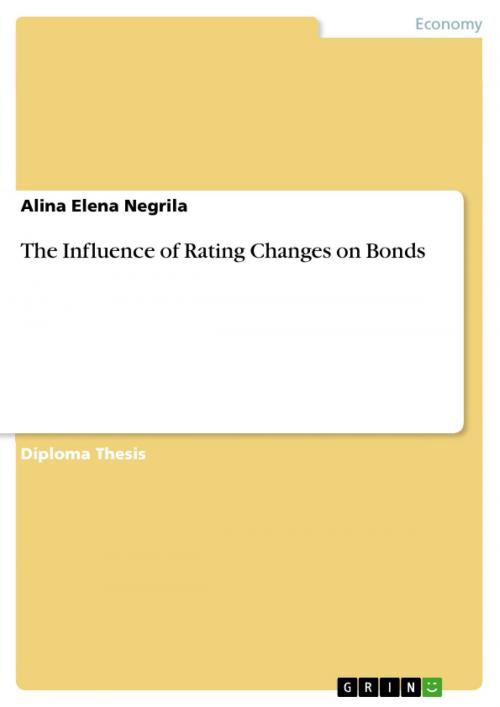| Author: | Alina Elena Negrila | ISBN: | 9783638529648 |
| Publisher: | GRIN Publishing | Publication: | August 2, 2006 |
| Imprint: | GRIN Publishing | Language: | English |
| Author: | Alina Elena Negrila |
| ISBN: | 9783638529648 |
| Publisher: | GRIN Publishing |
| Publication: | August 2, 2006 |
| Imprint: | GRIN Publishing |
| Language: | English |
Diploma Thesis from the year 2006 in the subject Business economics - Banking, Stock Exchanges, Insurance, Accounting, grade: 1,3, Technical University of Darmstadt (Institut für Betriebswirtschaftslehre), 100 entries in the bibliography, language: English, abstract: Capital markets all over the world have undergone fundamental changes in the last twenty years and the most prominent developments have been: disintermediation and securitization, globalization and financial innovations. This process has been accelerated by worldwide deregulation tendencies, as well as progress and global proliferation of transactional data processing and transmission technology. The rational investor disposing of limited time and means for making a decision has been thus confronted with new challenges in a global environment dominated by almost infinite and very complex investment possibilities. Because of limited resources, private clients as well as institutional investors have been increasingly overwhelmed by internally assessing credit risk and have sought for additional evaluations from external specialists in order to build an opinion about the risk and return profile of an obligation . With this background, rating issued by major international rating agencies has come to play a key role in the making of investment decisions and in supervisory regulation. It is especially important in this context to understand the impact of rating changes on capital markets. The influence of rating changes on bond prices is subject of controversial discussions. Despite the undisputable importance of rating in markets, the debate has been fueled by spectacular insolvencies of high rated companies, such as Enron, WorldCom and Parmalat. Accordingly, measuring and assessing the information content of ratings has been in the United States the object of intense theoretical and empirical research for decades, and the lively ongoing dispute surrounding the topic is far from being concluded. However, analyses on this subject were not initiated outside the US market until the last years. This is especially surprising in the context of international markets, with different accounting and investment regulations, where advantages of rating are even greater. The integration of national financial markets, Basel II impulses and the expansion of rating activities on global level have amplified the necessity of research in this field. Therefore, it is of paramount importance for the future of the financial sector to thoroughly investigate information content of rating and its impact on securities prices in order to build a solid scientific foundation for this subject and to thus present a reliable frame of reference for the activities of financial markets.
Diploma Thesis from the year 2006 in the subject Business economics - Banking, Stock Exchanges, Insurance, Accounting, grade: 1,3, Technical University of Darmstadt (Institut für Betriebswirtschaftslehre), 100 entries in the bibliography, language: English, abstract: Capital markets all over the world have undergone fundamental changes in the last twenty years and the most prominent developments have been: disintermediation and securitization, globalization and financial innovations. This process has been accelerated by worldwide deregulation tendencies, as well as progress and global proliferation of transactional data processing and transmission technology. The rational investor disposing of limited time and means for making a decision has been thus confronted with new challenges in a global environment dominated by almost infinite and very complex investment possibilities. Because of limited resources, private clients as well as institutional investors have been increasingly overwhelmed by internally assessing credit risk and have sought for additional evaluations from external specialists in order to build an opinion about the risk and return profile of an obligation . With this background, rating issued by major international rating agencies has come to play a key role in the making of investment decisions and in supervisory regulation. It is especially important in this context to understand the impact of rating changes on capital markets. The influence of rating changes on bond prices is subject of controversial discussions. Despite the undisputable importance of rating in markets, the debate has been fueled by spectacular insolvencies of high rated companies, such as Enron, WorldCom and Parmalat. Accordingly, measuring and assessing the information content of ratings has been in the United States the object of intense theoretical and empirical research for decades, and the lively ongoing dispute surrounding the topic is far from being concluded. However, analyses on this subject were not initiated outside the US market until the last years. This is especially surprising in the context of international markets, with different accounting and investment regulations, where advantages of rating are even greater. The integration of national financial markets, Basel II impulses and the expansion of rating activities on global level have amplified the necessity of research in this field. Therefore, it is of paramount importance for the future of the financial sector to thoroughly investigate information content of rating and its impact on securities prices in order to build a solid scientific foundation for this subject and to thus present a reliable frame of reference for the activities of financial markets.















